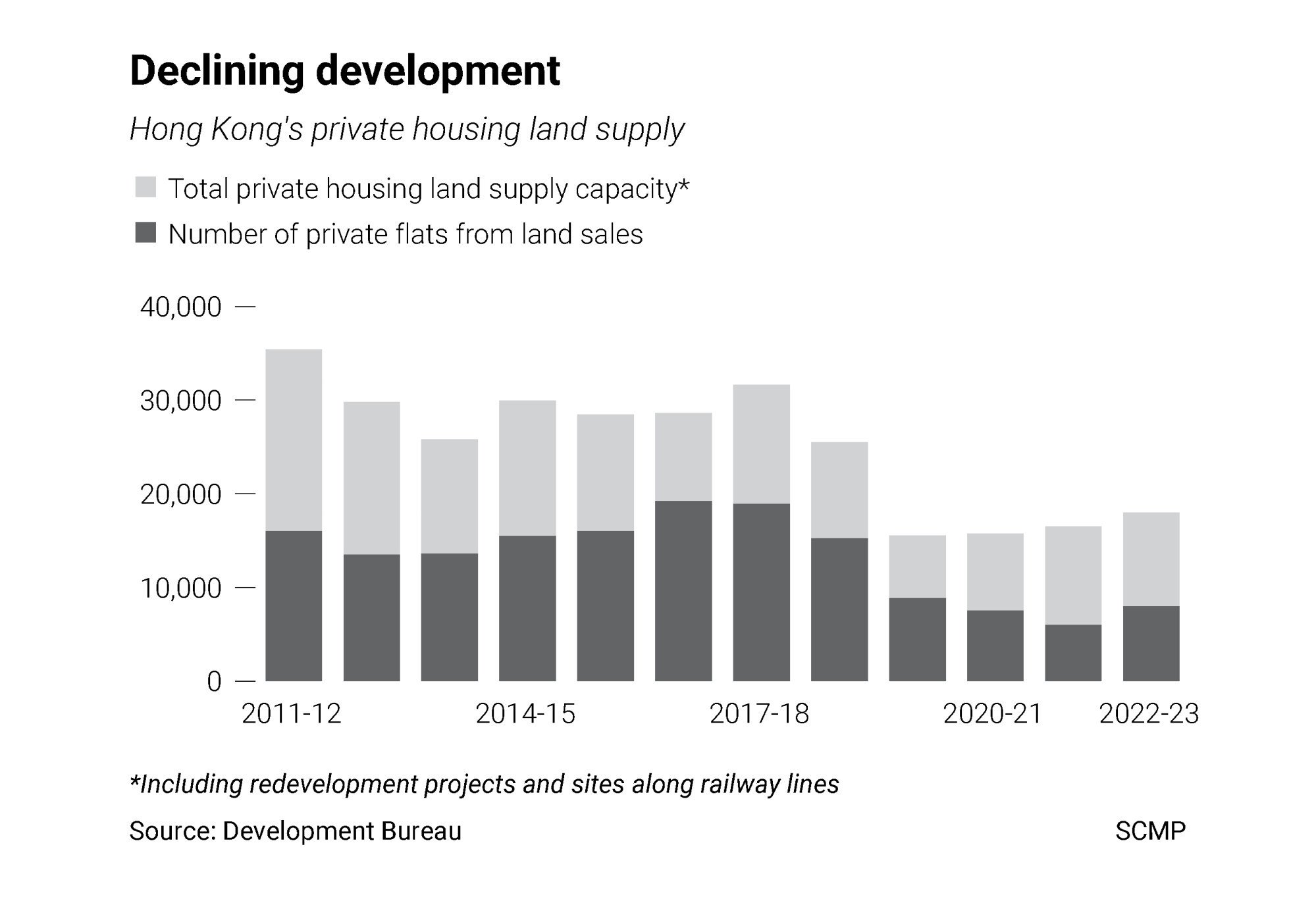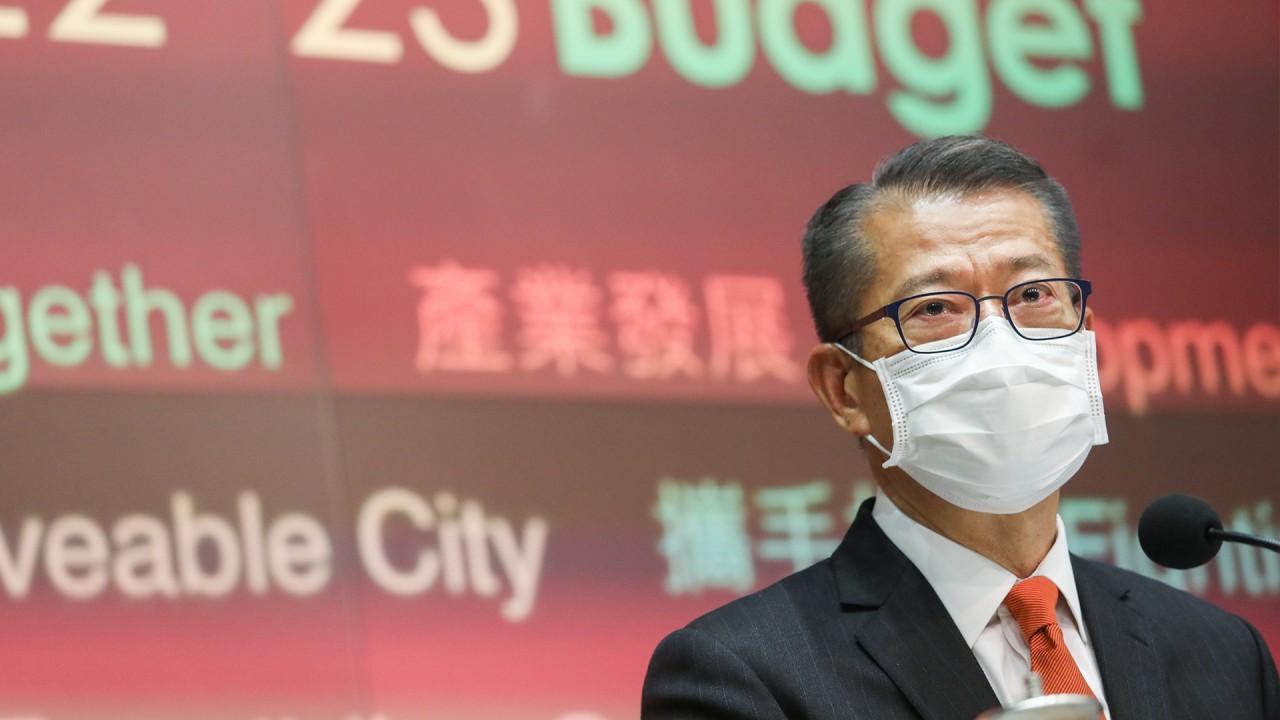
All private flats built in Hong Kong must be at least 280 sq ft in future under new government rule
- Requirement in private sector will cover all government land sales, railway property projects, homes built by Urban Renewal Authority and redevelopment projects
- Restriction was first introduced in December amid criticism that some private flats were becoming too small and applied to a site for sale in Tuen Mun
All private homes to be built in Hong Kong will have to be at least 280 sq ft, the government has announced, unless in rare cases when developers face site constraints or dated leases that may not be subject to the new rule.
The minimum size requirement in the private sector will cover all government land sales, railway property projects, homes built by the Urban Renewal Authority and redevelopment projects by developers.
Hong Kong to set aside HK$100 billion for ambitious Northern Metropolis plan
The restriction was first introduced in December, applying to a site for sale in Tuen Mun, amid criticism that some private flats were getting too small.
Secretary for Development Michael Wong Wai-lun told a press conference on Thursday about the government’s land sale programme, explaining the extension of the rule. “The reason is this – if you look at the supply of ‘nano flats’ in the market, the majority of them did not come from government land sales. The majority came from redevelopment. We think this proposal is reasonable.”
Nano flats are shoebox homes that can be smaller than 200 sq ft. They often do not come with a bedroom, bathroom with a window or a kitchen with a door. Some developers have said they have no choice but to build smaller so buyers can afford them, blaming the government for a tight land supply and high prices.

Wong said developers could be exempted from the 280 sq ft rule only if they faced site constraints, but added that he believed such cases would be rare.
“The supply of nano flats in the private market doesn’t account for that much of total private housing supply – maybe just around 10 per cent – so the impact [on total housing supply] will not be large,” he added.
The rule will apply to this year’s land sale sites, and private projects submitted to the Lands Department starting from Friday.
This year’s programme covers 13 residential sites able to provide 8,000 flats, up from 6,000 last year. It is the fifth consecutive year that the number is below 10,000. Two of the sites are located in Kai Tak. One of them, 1.6 hectares in size, is estimated to fetch up to HK$21 billion, or HK$15,000 per square foot. Another valuable site is located along Cape Road in the luxury neighbourhood of Stanley.

Four commercial sites will also be on offer, yielding only 300,000 square metres of gross floor area, a 37.5 per cent drop from last year.
The only prime commercial site this year is located at the junction of Sai Yee Street and Argyle Street in Mong Kok, formerly occupied by the Water Supplies Department. The 1.13-hectare site in the shopping district can generate a bid of as much as HK$23 billion, according to Martin Wong, director of consultancy Knight Frank.

However, a sea-view commercial site on the runway of the former Kai Tak airport, adjacent to the cruise terminal, has been pulled from the programme, development secretary Wong confirmed.
“We are building isolation facilities on the runway to battle the pandemic. That site is meant to be a tourism hub, but we can only hold for now, because what we are doing now is most important,” he said.
The withdrawal would not affect East Kowloon’s status as a secondary business centre, because there was still 1 million square metres of commercial land earmarked in the area, Wong added.
Stewart Leung Chi-kin, chairman of the executive committee of the Real Estate Developers Association, agreed that the 280 sq ft rule was “reasonable” and would help dispel outsiders’ conceptions that “all Hong Kong flats are as small as 200 sq ft”.
“Some nano flats are indeed smaller than a hotel room – how can you have space for cooking and sleeping? It is also difficult for buyers to resell their properties,” Leung said.

Chan Kim-ching, who leads civic group Liber Research Community, said the new requirement would “plug the loophole” in the previous policy.
“According to our study, about 65 per cent of nano flats came from private redevelopment sites. The coverage is now almost all-around,” he said. His group found that more than 10,900 flats under 260 sq ft were built over the past decade.
Chan added that the government should consider applying such requirements on public sector flats.
Among the latest batch of subsidised homes built by the Housing Authority, which will be put on sale from Friday, 320 units in a Kai Tak project were as small as 186 sq ft – the equivalent of 1½ car parking spaces.
Hong Kong’s nano flat supply to peak this year as curbs are put in place
Ryan Ip Man-ki, head of land and housing research at the think-tank Our Hong Kong Foundation, said the city might still see nano flats in the future, especially in old urban areas, where some dated land leases carried very few restrictions.
“If the site itself is already planned for residential use, and no land premium or town-planning procedures are required for redevelopment, it is not subject to this rule,” Ip said.
Since the government decided in 2018 to change the public-private housing ratio from 60-40 to 70-30, fewer sites have been earmarked for land sales and the priority is to boost public and subsidised housing for low-income families. The official goal for public sector housing accounts for 70 per cent of fresh supply, while the remaining 30 per cent will be for private flats.



